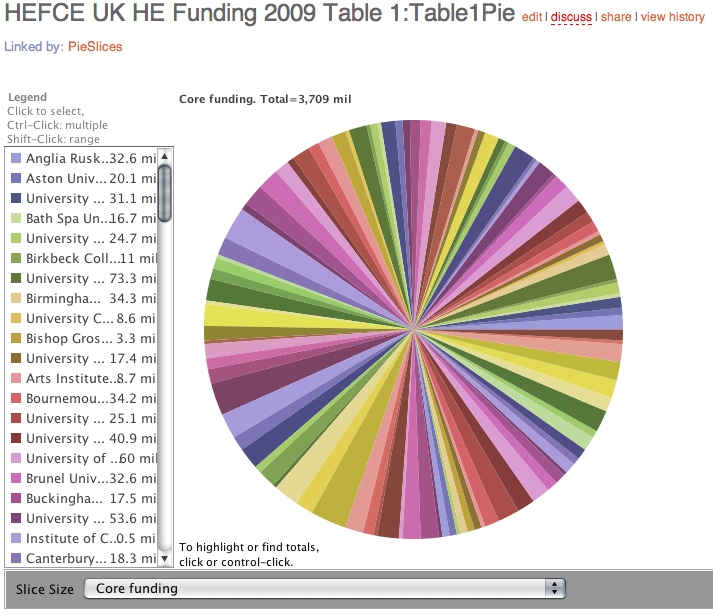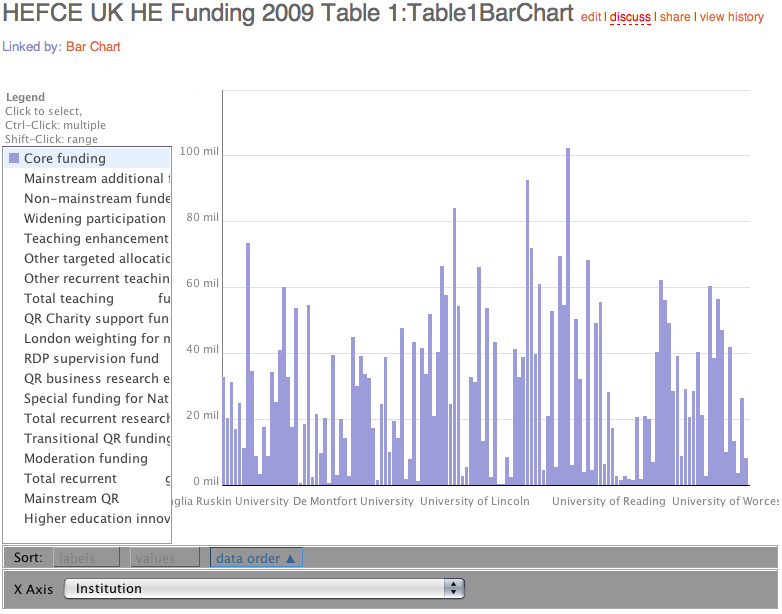In our weekly team meeting, I mentioned that I’d created some visualisations of the RAE research funding allocations. I also mentioned that Tony Hirst had previously done the same for the HEFCE teaching funding allocations. I offered to send everyone links to these, but before do so, I thought I’d have a go at re-creating the HEFCE visualisations myself to get a bit more practice in with IBM’s Many Eyes Wikified. So this is a companion piece to my previous post. All credit to Tony for opening my eyes to this stuff.
So, HEFCE have announced the 2009/10 grant allocations for UK Higher and Further Education institutions and provided full spreadsheets of the figures. I’ve imported the data into Google Spreadsheets and made the three tables publicly accessible as CSV files (1), (2), (3). Note that I’ve stripped out all data relating to FE grant allocations, which is included in the original spreadsheets.
Next, I’ve imported the CSV files into IBM’s Many Eyes Wikified (1), (2), (3), and these wikified tables are now the data sources for the following visualisations.
Recurrent grant for academic year 2009-10
The Pie
Bar Chart
Matrix
Bubble Chart
Comparison with 2008-09 academic year recurrent grant
The Pie
 Non-recurrent funding for 2009-10
Non-recurrent funding for 2009-10
The Pie
Bar Chart
Matrix





















